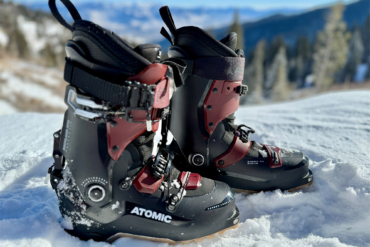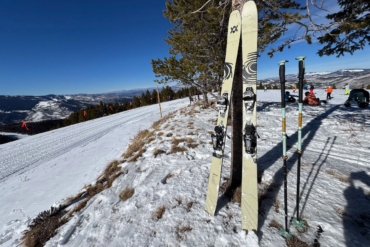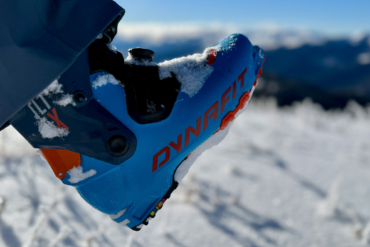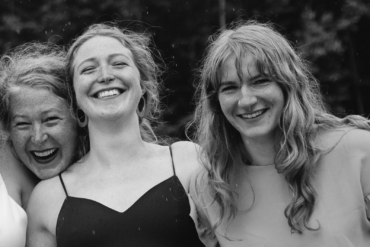This beginner’s guide to backcountry skiing and snowboarding goes beyond the gear. It includes everything I wish someone had told me before I got into the backcountry for the first time.
Backcountry skiing and snowboarding are at the top of mind for even more people this year due to the modifications needed in response to COVID-19. As we already have a guide for you on the gear you need to get started in backcountry skiing, this guide is tailored to everything else you need to know before you go.
By following these tips for beginners getting into backcountry skiing, not only can you have an enjoyable first season touring, but you’ll also feel safe and confident along the way.
Backcountry Skiing: A Beginner’s Guide
Schedule Your Avalanche Safety Course Now

If you are reading this sentence, schedule your AIARE Level 1 course now! Seriously, click the link!
You will learn more in these three days than any guide you can read online. Many providers are offering AIARE courses by administering the classroom portion via video. The two days of outdoor training can be easily done with safe physical distancing.
Look for a course that takes place in a location near where you plan to backcountry ski to become more familiar with the terrain. You’ll also connect with other people who are properly trained and are local to the same area as you, giving you built-in backcountry partners.
Do not let time, money, or pride deter you. While your friends ski in the resort, enjoying the same runs you have and will enjoy again, you’ll be skiing around with a professional, learning about avalanche paths, and then going for your first out-of-bounds tour.
If money is an issue, there are scholarships. Most courses also provide rentals along with your course. It’s better to try before you buy, anyway.
Lastly, an AIARE course is not a ski lesson. It teaches you how to make decisions that lead to you and those around you to ski another day.
Determine Your ‘Why’

Before I even agreed to tour with my group, I contemplated why I wanted to snowboard in the backcountry. I decided early on that I wanted to enjoy “hiking” during the winter with a downhill that was easier on my knees and also to spend time with nature and people in a new way. I don’t need steep grades or challenging terrain. A few whoops and hollers with a few unparalleled turns in powder was just a bonus.
Those who agree with my “why” are the ones I enjoy touring with the most. Suppose you want a quiet morning tour in nature before the crowds arrive. However, your partner wants to find the deepest powder and carve through 50% grade chutes that are outside the boundary of the resort. In that case, you will feel uncomfortable and pressured, and your partner will feel frustrated and potentially bored.
This is just like some people who like long days while backpacking, with no lunch breaks and pushing 15 to 20 miles. However, others prefer taking photographs, enjoying plenty of snacks and swim breaks, and hiking 5 to 7 miles per day. It’s best to find your match.
Speak Up & Listen

Even if you have a reliable partner or group that you trust, it’s meaningless if you feel like you can’t speak up and be heard. Before I even put my skins on for the first time with my crew, I told my partner that if I feel uncomfortable, if I am not being heard, or if we are not discussing situations regularly, I will leave immediately and no longer tour with them.
It was a challenge, first, being a female and, second, being the group’s newbie. However, my team slowly realized that I was making a solid contribution to our safety and experience.
The instructor for my AIARE 1 course shared with us that “having a woman in your group reduces your chance of getting caught in an avalanche by 40%.” You should not need a statistic to convince you of this, but if you are a woman, speak up!
If you have a woman in your group, congratulations — you are less likely to die. Second, listen to her. This applies to everyone — male, female, trans, nonbinary. In the backcountry, everyone’s voice deserves to be heard.
Embrace the Familiar & Mellow

It’s one thing to know what type of terrain tour avoids avalanches. But sometimes that information can only be found in a guidebook, with extensive online research, or with an in-person guide. Even if the slope is low-grade or a popular touring spot, there can be surprise terrain traps.
My favorite spots to tour are the ones I know like the back of my hand. They are the ones within the resort (when uphill access is permitted) or just outside the boundaries. This isn’t because there is less danger (“side-country” is not safer than “backcountry”), but because I know every rock, every tree, every roll, and every gully. I know the terrain intimately, and therefore I know the safest way to ascend and descend.
Practice, Practice, Practice

Once you have the class — and your avalanche safety gear has been tested and proved to be in top-notch working condition — get out there! Gear can be expensive, and it adds up quickly. Finding used gear can be a huge challenge depending on your sport and body size. Don’t let these be roadblocks.
Want to feel more confident in your rescue skills before touring? Go out into a meadow with one of your touring partners with your avalanche safety gear. Then, take turns burying a backpack with a beacon in it with the other person searching for it using their transceiver.
Have skis or a snowboard and snowshoes? My very first tours were with my beloved Coalition Snow all-mountain snowboard strapped to my backpack and my snowshoes strapped to my snowboard boots.
Want to test drive some touring setups before buying? Rent from a local shop at a resort or in town, just like you would demo alpine setups.
Time to Start the Backcountry Skiing Journey
Getting into backcountry skiing for the first time is a big decision that should not be taken lightly. We hope this beginner’s guide helps you get pumped and prepared to backcountry ski this season. We hope it also eliminates the hesitations, roadblocks, and pressure from others to ensure that you have the best time possible.







